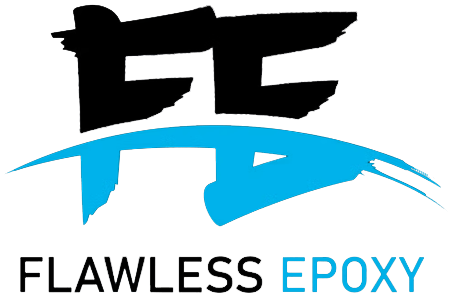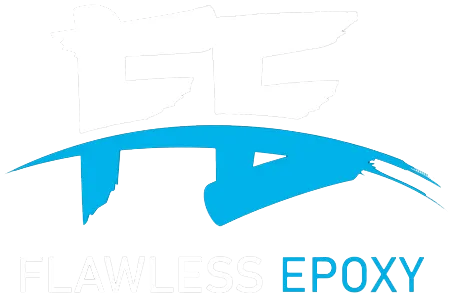

RESIDENTIAL WARRANTY
Garage Flooring Specialist in Madison, MS
CUSTOM EPOXY FLOORING FOR RESIDENTIAL AND COMMERCIAL APPLICATIONS
STOP!!!
THIS IS AN EXAMPLE OF A PRODUCT WARRANTY!
IT IS YOUR RESPONSIBILITY TO ENSURE YOUR COMPANY'S WARRANTY TERMS ARE REPRESENTED HERE.
M3 DIGITAL LLC ARE NOT ATTORNEYS AND DO NOT PROVIDE LEGAL ADVICE. YOU ARE STRONGLY ENCOURAGED TO CONSULT WITH YOUR OWN ATTORNEY BEFORE POSTING THIS PAGE.
REMOVE THIS SECTION AFTER UPDATING WARRANTY INFO.
LIMITED LIFETIME RESIDENTIAL WARRANTY
To receive the benefits of this Limited Lifetime Residential Warranty (this “Warranty”), you must, no later than thirty (30) days after the Installation Date, complete and submit a warranty registration form. Such registration is a condition precedent to coverage under this Warranty, and the failure to do so will cause the loss of such benefits, but not the exclusions and limitations in this Warranty.
1. The Lifetime Coverage Period
Subject to the terms and conditions of this Warranty, Z. Epoxy Snapshot (“”) warrants to the Owner(s) of the residential premises where a Coating System (the “ System”) is installed (the “Residence”) that, beginning on the date of completion of such installation (the “Installation Date”) and continuing until the sooner to occur of the (i) the lifetime of the Owner(s) or (ii) the life of the period after the Installation Date and before any ownership interest(s) in the Residence is or are transferred other than as expressly permitted by this Warranty (the “Lifetime Coverage Period”):
The Polyaspartic Topcoat (the “ Topcoat”), if and as used as part of the System, will not discolor due to ultraviolet (UV) exposure from the sun, except for typical changes, oxidation or weathering of the Topcoat due to the passage of time under normal atmospheric conditions and
The System will be free from defects that result in peeling, blistering, chipping or other forms of delamination beyond normal wear and tear (collectively, “Delamination Damage”).
2. Parameters:
During the Lifetime Coverage Period, this Warranty covers the System when installed and is subject to the exclusions and limitations described in this Warranty, including without limitation, that, except as expressly provided herein, this Warranty cannot be transferred or assigned.
3. Certain Definitions:
As used in this Warranty: (a) the “Owner(s)” (i) means or refers to the owner(s) in fee simple of the Residence on the Installation Date, unless the entire ownership of the residence is transferred no later than twelve (12) months after the Installation Date, then the first immediately subsequent owner(s) in fee simple of the Residence become(s) the Owner(s) and (ii) may consist of (A) one natural person, (B) more than one natural person, (C) a combination of one or more natural persons and one or more corporations, limited liability companies, partnerships, trusts or anything else so designated by (in the singular, “entity” and in the plural, “entities”) or (D) one or more entities; (b) the “lifetime of the Owner(s)” means with respect to the situation described in: (i) Section 3(a)(ii)(A) of this Warranty, the lifetime of that natural person; (ii) Section 3(a)(ii)(B) hereof, the earliest lifetime of a natural person who has an ownership interest in the Residence or (iii) Sections 3(a)(ii)(C) or 3(a)(ii)(D) hereof, the sooner to occur of (A) the dissolution (or substantive equivalent as determined by ) of the entity or any entity included as the Owner(s) or (2) the earliest lifetime of a natural person who has a direct or indirect ownership interest in the Owner(s) or is a direct or indirect beneficiary of a trust that is one of the Owner(s); and (c) “ Coating System” or the “System” means the combination of chemical and other components (which may include without limitation concrete preparation and repair products, basecoat, chips and topcoat) expressly specified, authorized or approved in writing by or sourced and approved by for such application (individually and collectively, “Authorized Components”).
4. Exclusions:
Each of the following is expressly excluded from this Warranty:
Damage (including without limitation Delamination Damage) caused by or resulting from in whole or in part any or all of the following: (a) physical abuse to or misuse of the System (such as, but not limited to, (i) excessive weight or wear for typical residential use or (ii) dragging or dropping one or more heavy objects); (b) accidents, fire or acts of God (including without limitation floods, tornadoes, hurricanes, earthquakes or other weather-related events) causing such things as, but not limited to, discoloration, staining, fading, excessive wear, scratching, marring, dents, gouges, tears, scuffs, cuts or similar results; (c) non-residential or atypical use (such as, but not limited to, application in (i) commercial or industrial settings or (ii) excessive moisture environments (including without limitation underwater or standing water)); (d) cracks; (e) exposure to corrosive materials (including but not limited to brake fluid and battery acid); (f) repair or service of the System not performed by an Authorized Installer; (g) temperature extremes (including without limitation heat beyond typical residential temperatures); or (h) shifting or settling of the surface receiving the basecoat (“substrate”), base, subbase, subgrade or foundation;
Damage caused by (a) alkali, hydrostatic pressure, efflorescence, mold, mildew or excessive moisture in concrete or its base, subbase or subgrade or (b) defective or compromised concrete or its base, subbase or subgrade or other deterioration thereof (including without limitation exposed concrete reinforcement causing rust);
Discoloration, fading, staining or other adverse effects caused by, but not limited to, dyes, inks, contact with synthetic or rubber products (such as, but not limited to (a) soft tires, (b) tire shine, scuffs or burnout or (c) floor mats that mark), rust (whether from vehicles or otherwise), misuse of maintenance products or use of maintenance products not expressly specified, authorized or approved in writing by or sourced from (and approved by for such application), other improper maintenance, contaminants, spills and tracked-in matter, including, but not limited to, asphalt, resins and driveway sealers;
Differences in appearance between the System as (a) originally installed or as repaired and (b) the area(s) subsequently repaired; and
Use of substrate preparation or substrate repair products without the more or less contemporaneous application of the other parts of the System.
5. Exclusive Remedy
For the System determined by to be defective or to have failed under the conditions covered by this Warranty within the Lifetime Coverage Period, will provide free of charge to Owner(s) the Authorized Components sold by and required to repair or replace the defective or failed part(s) of the System involved. Z. Epoxy Snapshot will also provide necessary labor for such repair or replacement. In the event of System failure due to a product manugacturing defect or product recall, Z. Epoxy Snapshot will, in it's sole discretion, select a suitable replacement product deemed an Authorized Component. If the Owner(s) desire a specific replacement product not determined to be an Authorized Component or Authorized Replacement in the sole discretion of Z. Epoxy Snapshot, Owner(s) shall be responsible for the cost of product materials not covered by original product manufacturer warranty. As determined by , such Authorized Components provided will be of (i) substantially equal or (ii) greater value and quality than what was used originally. The remedy described in this Warranty is the sole and exclusive remedy for claims under this Warranty.
6. LIMITATIONS:
THIS WARRANTY IS IN LIEU OF ALL OTHER EXPRESS OR IMPLIED WARRANTIES, OBLIGATIONS OR LIABILITIES, INCLUDING, BUT NOT LIMITED TO, EACH IMPLIED WARRANTY OF MERCHANTABILITY OR IMPLIED WARRANTY OF FITNESS. ANY WARRANTY THAT IS FOUND TO ARISE BY WAY OF FEDERAL OR STATE LAW IS LIMITED TO AND DOES EXTEND BEYOND THE SCOPE AND DURATION OF COVERAGE AS SET FORTH IN THIS WARRANTY. EACH ACTION FOR BREACH OF WARRANTY MUST BE BROUGHT NO LATER THAN TEN (10) DAYS AFTER THE LIFETIME COVERAGE PERIOD. IN NO CASE SHALL BE LIABLE FOR ANY OR ALL INCIDENTAL AND CONSEQUENTIAL DAMAGES OF ANY KIND FOR BREACH OF THIS OR ANY OTHER WARRANTY, EXPRESS OR IMPLIED. THE EXCLUSION OF INCIDENTIAL AND CONSEQUENTIAL DAMAGES SHALL BE INDEPENDENT OF ANY FAILURE OF THE ESSENTIAL PURPOSE OF ANY WARRANTY. THIS WARRANTY DOES NOT COVER LOSS OF USE OF ANY OR ALL OF THE AREA WHERE THE SYSTEM WAS APPLIED. No agent, representative or employee of Z. Epoxy Snapshot has the authority to alter the terms and conditions of this Warranty.
7. State Law
Some states do not allow limitations on how long an implied warranty lasts, so the above limitation may not apply to you. Some states do not allow the exclusion or limitation of incidental or consequential damages, so the above exclusion may not apply to you. This Warranty gives you specific legal rights, and you may also have other rights which vary from state to state.
8. Warranty Claims
In the event that you have a warranty claim, it must be made in writing within thirty (30) days after the basis for such claim has or reasonably should have been detected and no later than ten (10) days after the end of the Lifetime Coverage Period. To make a claim, the Owner(s) must complete a warranty form by (a) online submission to or (b) paper copy sent to: Z. Epoxy Snapshot, Attn: Warranty Department, 123 Main Street, Madison, MS 39110.
9. Legal Remedies:
This Warranty, as well as any and all claims or causes of action arising out of or relating to this Warranty (regardless whether in contract or tort or by statute), shall be governed by and interpreted under the substantive and procedural laws of the State of without regard to that state’s conflicts of laws provisions, except that, to the extent otherwise applicable, the United Nations Convention for the International Sale of Goods does not apply. The written notice of claim and the repair or replacement remedy described in this Warranty must be made or completed prior to initiating any action to seek legal or equitable remedies for breach of this Warranty or any implied warranties. Any action for breach of this Warranty or any implied warranty must be commenced no later than ninety (90) days after the Lifetime Coverage Period. Some states do not permit reduction of the statute of limitations, so such limitation on commencement may not apply to you. Legal disputes relating to this Warranty or an alleged breach of any or all of this Warranty, implied warranties or representations by of any kind must be litigated at the trial level as a bench trial in state court in or federal court in , as the Owner(s) and hereby waive trial by jury. The right of the Owner(s) to participate as a class member or members in any class action lawsuit brought against regarding any alleged defect or performance failure regarding all or any part(s) of the System is expressly waived. Any authorization or performance of repairs, attempt to resolve a compliant or filing of a claim under this Warranty will not (a) constitute a waiver of ’s rights or (b) extend (i) the Lifetime Coverage Period or (ii) when Owner(s) must commence an action to enforce any breach of warranty or other claim, unless prohibited by state law. The interpretation of this Warranty by will control.
10. Acceptance of Terms:
By registration of this Warranty, other performance or the acceptance of performance under this Warranty, the Owner(s) accept the terms and conditions of this Warranty.
11. Acceptance of Terms:
If, in the view of , applicable law contains or may contain any requirement(s) or other provision(s) that is or are contrary to, in conflict with or missing from any provision(s) or part(s) thereof in this Warranty (collectively, the “Identified Provisions”), , at any time, may elect by notice from to the Owner(s) (effective upon receipt thereof or as otherwise designated by therein) that such requirement(s) or provision(s) be deleted from, substituted for or added to the Identified Provisions to the minimum extent necessary in the opinion of to address the issue(s).
12. Contact Information
We encourage our customers to contact us with questions or comments about our products and services. Please feel free to do so by sending an email .
If you have any questions or inquiries concerning the terms of this Warranty, you may contact Z. Epoxy Snapshot by email at or by regular mail at:
Z. Epoxy Snapshot
123 Main Street
Madison, MS 39110

The area's best in epoxy and polyspartic floor coverings
We service the entire metro area
TESTIMONIALS
What others are saying

"Loved everything so far"
"Testimonial lorem ipsum dolor sit amet, consectetur adipisicing elit. Autem dolore, alias, numquam enim dolor elit."
- Your Name


"My life changed forever"
"Testimonial lorem ipsum dolor sit amet, consectetur adipisicing elit. Autem dolore, alias, numquam enim dolor elit."
- Your Name


"Highly recommend this"
"Testimonial lorem ipsum dolor sit amet, consectetur adipisicing elit. Autem dolore, alias, numquam enim dolor elit."
- Your Name

STILL NOT SURE?
Frequently Asked Questions
General Epoxy Information
What is epoxy flooring?
Epoxy flooring is a unique floor material for homes and businesses that has steadily grown in popularity over the last 10 years. Once a concrete floor has been ground and prepped, a epoxy resin and a hardening chemical are mixed together. The chemical reaction will turn the mixture harder than the floor it covers within a few hours. The compound is poured onto the concrete and allowed to harden before a second or third layer is applied. This liquid to solid process gives epoxy flooring the ability to be strong, stain resistant, and durable to chemicals and weight. Its most popular applications are in hospitals, schools, garages, and industrial environments. But it can be just as useful for residential living rooms, kitchens, or other rooms types.
What are some of the most common applications?
Epoxy Flooring can be applied at Schools, Hotels, Industrial Plants, Garages, Libraries, Retail and Shopping Centers, Lobbies, Homes, Patios, Gyms, Kitchens, and Showrooms.
How long does installation take?
Installation times vary by job size, but for a typical residential garage, please allow two days for installation. On day one, we prepare the floor and apply the base layer of coating and flake layer. On the second day, we apply two layers of clear topcoat, providing additional protection and a smooth, glass-like finish. If non-slip features are desired, they will also be incorporated into the flooring system on the second day.
What are some of the benefits of epoxy flooring?
There are an immense number of benefits to choosing epoxy flooring. The first and foremost one is the price. The materials and installation costs are not very high, making it an easy investment. It’s also stain resistant. So if you were to spill liquids or chemicals, it would be an easy clean. The glossy surface makes messes a little less stressful. That’s why they’re popular for garages and hospitals. But, recently, they’ve become popular for living rooms, because they’re easy to add designs to. Patterns, swirls, and colors make this durable surface into a piece of art.
How long will my floor last?
In an interior residential setting, like a garage or basement, your floor coating should last a lifetime. We are so confident in this, we provide a lifetime warranty on all interior residential applications. Industrial, commercial, and exterior applications have a lot of variables and endure considerably more abuse from use and outdoor elements, so we only warranty those for a year, although you can expect them to last for many years before they need to be resurfaced.
Will floor coatings prevent my floor from cracking?
No. Floor coatings are simply aesthetic, not structural. They will help mask hairline cracks in your concrete floors, but they cannot prevent cracks from forming as your house settles just as paint will not prevent cracks in your drywall from forming as the foundation settles.
Preparation & Installation Information
What is the process?
We first evaluate the concrete to check for moisture content inside the slab. The we prepare the surface by completely grinding off the cap or first layer of the slab. The cap prevents epoxy's or paints from bonding to the concrete. Once the cap is removed and the pores of the concrete are opened, we apply a thick coat of epoxy and flake to the slab. After the epoxy has sufficiently cured we apply a top coat to protect and seal the coating.
If I have new concrete, does it still need to be prepped with a grinder?
Floor grinding accomplishes two things. First, it can clear an old floor of contaminants, creating a clean surface for the epoxy to adhere to. This is important, but equally important is giving epoxy a rough surface to bond with. A rough slightly surface provides extra surface area for floor coatings to bond to, decreasing the chances of your floor coating delaminating. We grind every floor, new or old, to provide you with the best installation possible. Whether you work with us or not, we recommend choosing a contractor that does things this way.
How long does installation take?
Installation times vary by job size, but for a typical residential garage, please allow two days for installation. On day one, we prepare the floor and apply the base layer of coating and flake layer. On the second day, we apply two layers of clear topcoat, providing additional protection and a smooth, glass-like finish. If non-slip features are desired, they will also be incorporated into the flooring system on the second day.
How long before I can use my garage floor again?
Your floor will be ready for light foot traffic within 3-4 hours after installation. Please wait 24 hours before moving items back onto the floor. Some systems will allow for vehicular traffic within 24 hours, but others may require up to 72 hours.
What if I don't like flake?
No problem! We install floors without flake finishes. Most homeowners prefer flake because it adds a decorative element to a normally drab and lifeless space, but more importantly, it helps mask imperfections in your floor. Most floors have some sort of imperfection, whether those be slightly uneven areas, fish eyes, or hairline cracks. Covering these with flake is a faster and cheaper alternative to repairing these imperfections. Large cracks must always be repaired before coating and flake application, however, as those will not be hidden without filling them with crack repair resin.
Cost of Epoxy Coating
How much will coating my floors cost?
Prices can vary depending on the condition of your floor, the setting, and the finish you select. Typically, for residential garages, prices range from $5.25-6.50 per square foot, although certain styles can cost a bit more or less.
Why are floor coatings so expensive? Isn't it just paint?
No. Although epoxy floor coatings may look like paint, and be applied similarly to paint, they are not paint. Paint is a one part solution that simply dries over your surface. Epoxy is a two part solution that cures and chemically bonds to your concrete. A properly performed epoxy floor coating should last a lifetime in an interior setting like a garage while paint will often begin peeling shortly after installation.
STILL HAVE QUESTIONS?
READY TO transform your floor?
Schedule a Consultation and Save $200!
Lorem ipsum dolor sit amet, consectetur adipisicing elit. Autem dolore, alias, numquam enim ab voluptate id quam harum ducimus cupiditate similique quisquam et deserunt.
provides Residential and Commercial epoxy flooring in . We are ’s top-rated epoxy floor and concrete coatings company, specializing in one-day Epoxy and Metallic garage flooring, and Quartz carpet pebbles for pool decks and patios.

COMPANY
CUSTOMER CARE
LEGAL
FOLLOW US
Copyright 2025. Z. Epoxy Snapshot. All Rights Reserved.